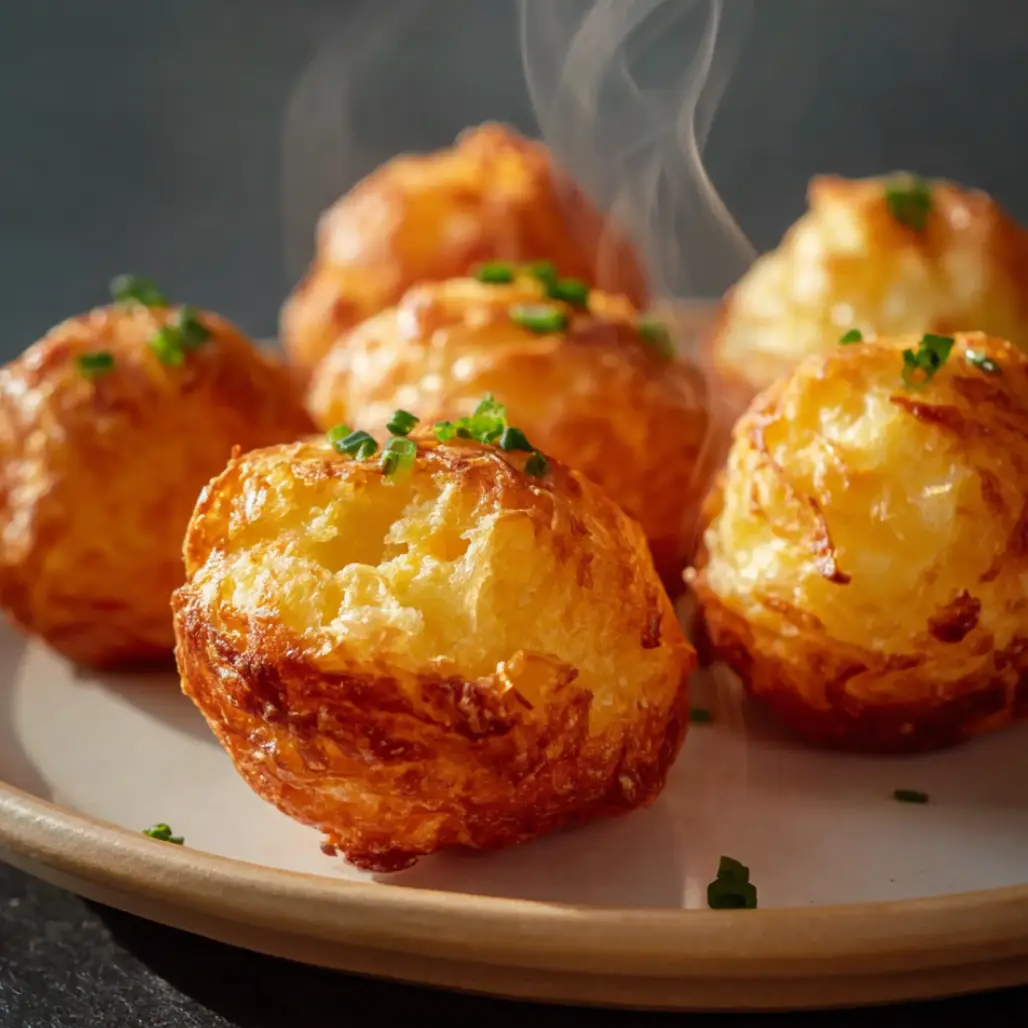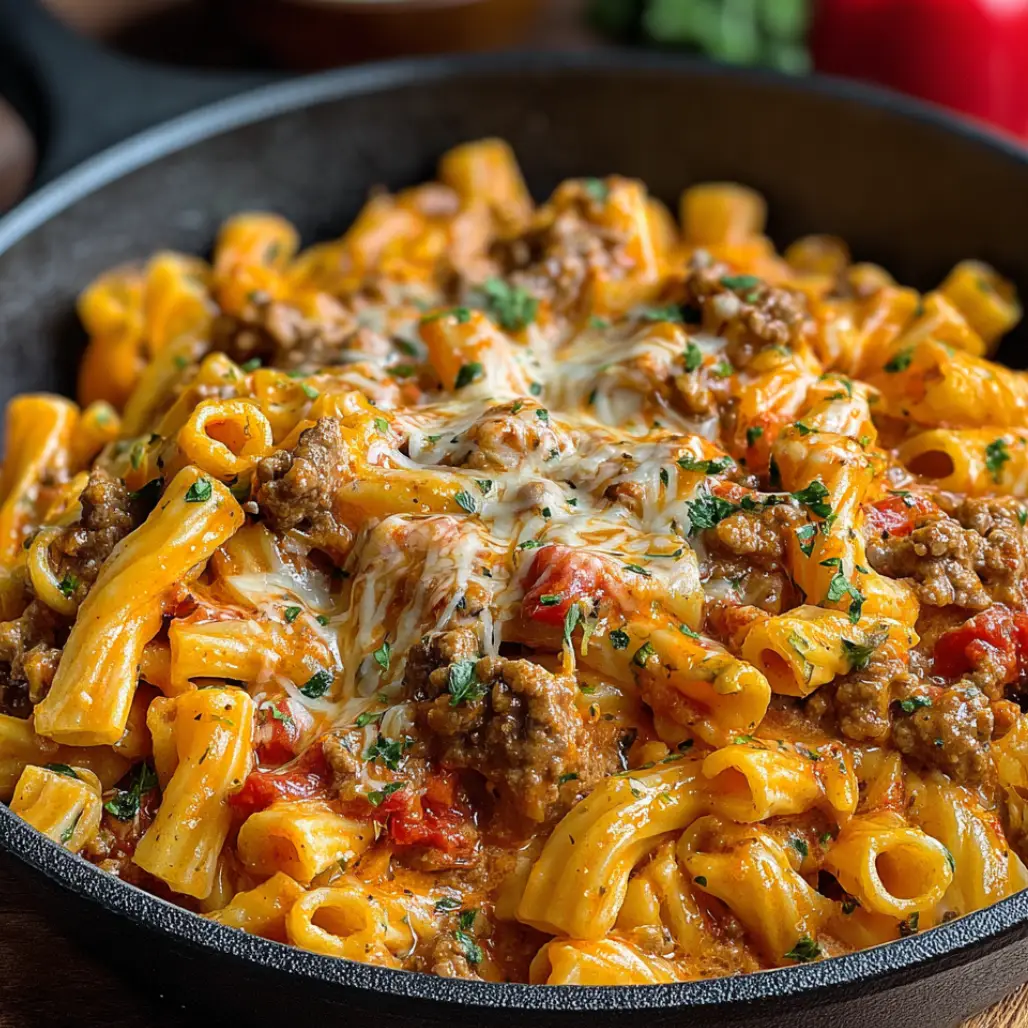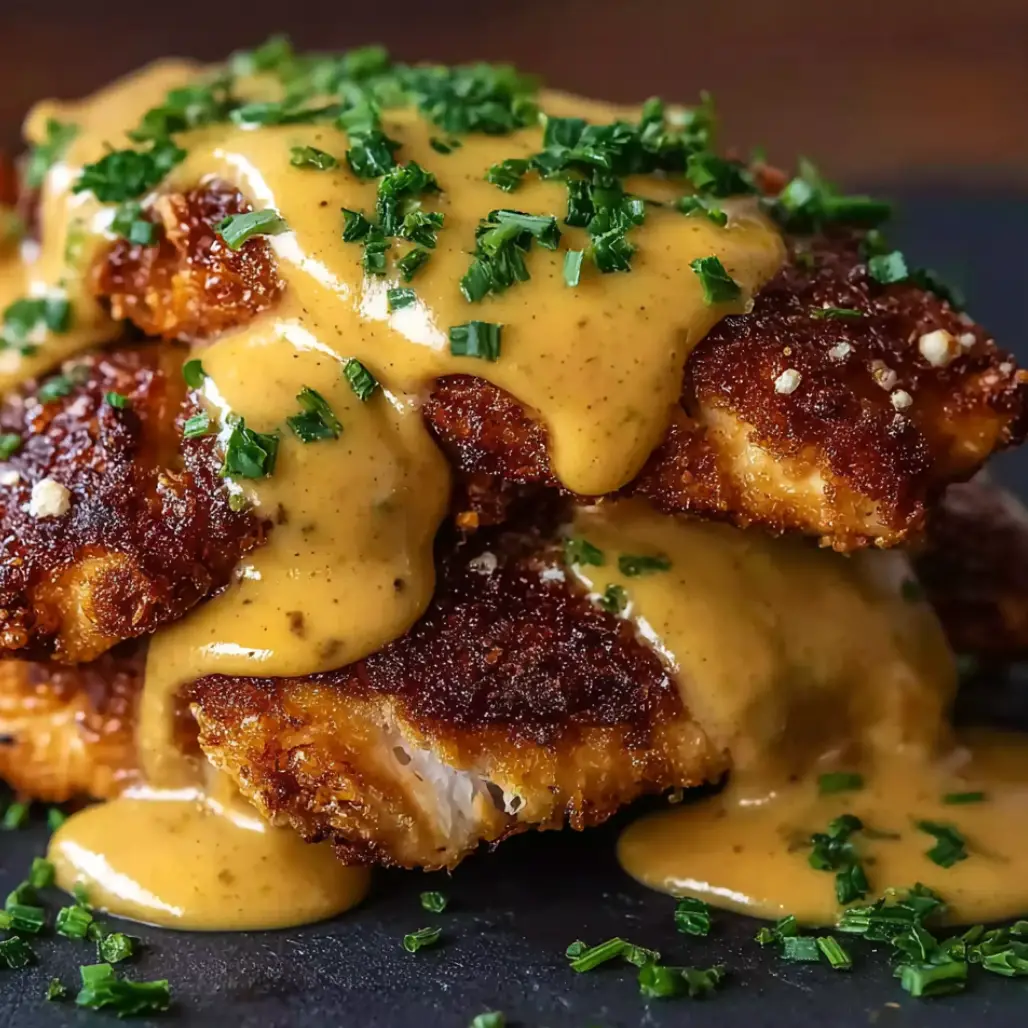| Prep Time: 15 minutes | Cook Time: 25 minutes | Total Time: 40 minutes | Serves: 4 |
|---|
Patty melt represents the pinnacle of American comfort food innovation, transforming the humble hamburger into an elevated sandwich experience that combines the best elements of a burger and grilled cheese into one irresistible creation because this classic diner staple showcases how simple ingredients can be orchestrated into something truly extraordinary through proper technique and attention to detail. This exceptional patty melt delivers the perfect balance of textures and flavors, featuring a juicy beef patty nestled between layers of caramelized onions and melted Swiss cheese, all encased in golden, buttery rye bread that provides the ideal canvas for this masterpiece because the combination creates a symphony of tastes that satisfies both nostalgic cravings and sophisticated palate preferences. Whether served as the centerpiece of a cozy dinner at home, enjoyed as a satisfying lunch that provides sustained energy throughout the day, or presented as comfort food that soothes the soul during challenging times, this patty melt delivers consistent excellence that will establish it as a treasured recipe in your culinary collection because its impressive appearance and universally appealing flavors make it suitable for both casual family meals and special occasions when you want to demonstrate your cooking prowess while honoring classic American diner traditions.
Why You’ll Fall in Love with This Patty Melt
The irresistible appeal of patty melt lies in its perfect embodiment of comfort food principles, delivering maximum satisfaction through the harmonious combination of familiar flavors and textures that create something greater than the sum of its parts because this remarkable sandwich proves that exceptional results emerge from understanding how simple ingredients work together to create complex, deeply satisfying eating experiences. This magnificent patty melt requires no exotic ingredients or specialized equipment, making it accessible to home cooks who appreciate authentic flavors and traditional techniques because the straightforward preparation methods belie the sophisticated results that emerge from careful attention to timing, temperature, and ingredient quality.
The therapeutic process of creating patty melt connects us to fundamental cooking traditions that emphasize patience and technique, from the slow caramelization of onions that transforms sharp flavors into sweet complexity to the careful grilling that achieves perfect bread texture because engaging with these time-honored methods creates meditative moments that enhance both the cooking process and final enjoyment. The customization possibilities inherent in patty melt enable endless creative variations that accommodate different dietary preferences and regional tastes while maintaining the essential characteristics that define this classic sandwich because foundational techniques provide reliable frameworks for experimentation and personal expression.
Furthermore, patty melt offers exceptional value as both a satisfying meal and a technique-building exercise that develops skills transferable to numerous other cooking applications because mastering the components of caramelization, meat cookery, and grilled sandwich assembly enhances overall kitchen confidence while creating a versatile repertoire of techniques that serve multiple culinary purposes.
Essential Ingredients for Perfect Patty Melt
Protein Foundation:
- 1 pound ground beef 80/20 blend for optimal juiciness and flavor development
- 1 teaspoon kosher salt for seasoning enhancement and moisture retention
- 1/2 teaspoon freshly ground black pepper for aromatic depth and gentle heat
- 1/2 teaspoon garlic powder for savory complexity and umami enhancement
Bread and Cheese Components:
- 8 slices marble rye bread for traditional flavor and superior toasting characteristics
- 8 slices Swiss cheese for smooth melting and nutty complexity
- 4 tablespoons unsalted butter softened for golden browning and rich flavor
- 2 tablespoons Dijon mustard for tangy brightness and flavor contrast
Caramelized Onion Elements:
- 2 large yellow onions thinly sliced for sweet caramelization and flavor depth
- 2 tablespoons vegetable oil for even cooking and browning facilitation
- 1 tablespoon butter for additional richness and flavor development
- 1/2 teaspoon salt for moisture extraction and caramelization enhancement
- 1 tablespoon brown sugar for accelerated caramelization and color development
The Art of Creating Perfect Patty Melt
Mastering the technique of patty melt requires understanding the critical timing and temperature relationships between its three primary components because successful execution depends on coordinating the caramelization of onions, the cooking of beef patties, and the grilling of the assembled sandwich to achieve optimal results simultaneously. The caramelization process for onions represents perhaps the most crucial element in patty melt preparation, as proper technique transforms sharp, pungent raw onions into sweet, complex flavors that provide essential balance to the rich beef and cheese because patience during this slow cooking process develops the deep, golden-brown color and concentrated sweetness that distinguishes exceptional patty melts from ordinary versions.
Temperature control throughout patty melt preparation affects every aspect of the final result, from the gentle heat required for proper onion caramelization to the medium-high temperature needed for achieving perfect beef patty searing while maintaining juicy interiors because thermal management ensures each component reaches its optimal state without compromising others. The sandwich assembly technique involves understanding how to layer ingredients for maximum flavor integration and structural integrity because proper arrangement ensures even cheese melting while preventing filling displacement during the final grilling process.
Understanding the science behind bread selection helps explain why rye bread performs so exceptionally in patty melt applications, as its dense texture and tangy flavor provide both structural support and complementary taste elements that enhance rather than compete with the other components because ingredient synergy creates the harmonious balance that defines exceptional versions of this classic sandwich.
Step-by-Step Instructions for Patty Melt
Begin by slicing the onions into thin, uniform strips and heating oil and butter in a large skillet over medium-low heat, ensuring proper preparation that facilitates even caramelization because consistent slicing and appropriate temperature create the foundation for developing the sweet, complex flavors essential to exceptional patty melt preparation.
Professional Tip: Use a sharp knife and steady cutting technique to create uniform onion slices that caramelize evenly, preventing some pieces from burning while others remain undercooked in your patty melt preparation.
Key Points: Proper onion preparation and temperature control establish the foundation for successful caramelization that provides the sweet balance essential to outstanding patty melt flavor profiles.
Add the sliced onions to the heated skillet along with salt and brown sugar, stirring occasionally over medium-low heat for twenty to twenty-five minutes until they develop deep golden-brown color and sweet, jammy consistency because patience during this crucial step creates the complex flavors that distinguish exceptional patty melt from ordinary versions.
Professional Tip: Resist the urge to increase heat for faster cooking, as high temperatures will brown the onions’ exterior while leaving the interior sharp and undercooked, compromising the final quality of your patty melt.
Key Points: Slow, controlled caramelization develops the deep sweetness and complex flavors that provide essential balance to the rich beef and cheese components in your patty melt.
While onions caramelize, divide the ground beef into four equal portions and gently shape into patties slightly larger than your bread slices, creating shallow depressions in the centers to prevent excessive puffing during cooking because proper shaping ensures even thickness and prevents the dome formation that can interfere with sandwich assembly in your patty melt.
Professional Tip: Handle the meat minimally during shaping to prevent tough texture, and make patties slightly larger than bread to accommodate shrinkage during cooking for perfect patty melt proportions.
Key Points: Gentle handling and proper sizing create patties that cook evenly while maintaining juicy texture and appropriate dimensions for your finished patty melt.
Season the formed patties generously with salt, pepper, and garlic powder on both sides, then heat a large skillet or griddle over medium-high heat until hot because proper seasoning and temperature ensure optimal flavor development and attractive browning for your patty melt components.
Professional Tip: Allow the seasoned patties to rest at room temperature for ten minutes before cooking to ensure even cooking and better flavor penetration throughout your patty melt preparation.
Key Points: Adequate seasoning and proper temperature preparation create the conditions necessary for developing the rich, savory flavors that define exceptional patty melt patties.
Cook the seasoned patties for three to four minutes per side without pressing or moving them unnecessarily, developing deep brown crusts while maintaining juicy interiors because proper technique creates the textural contrast essential for outstanding patty melt eating experiences.
Professional Tip: Avoid pressing patties with the spatula during cooking, as this squeezes out valuable juices that contribute to flavor and texture in your finished patty melt.
Key Points: Undisturbed cooking allows proper browning and juice retention that creates the ideal texture and flavor balance for your patty melt patties.
Remove cooked patties from the skillet and set aside to rest while you prepare the bread, allowing juices to redistribute throughout the meat for optimal texture and flavor when assembled into your patty melt.
Professional Tip: Tent the resting patties loosely with foil to maintain warmth while preventing continued cooking that could dry out the meat for your patty melt assembly.
Key Points: Proper resting allows juice redistribution that ensures optimal texture and flavor in the finished patty melt while maintaining appropriate serving temperature.
Butter one side of each bread slice generously, then heat a clean skillet or griddle over medium heat and toast the bread butter-side down until golden brown and crispy because proper toasting creates the textural foundation that supports the other components while adding buttery richness to your patty melt.
Professional Tip: Use enough butter to create even coverage but avoid excessive amounts that could cause burning during the toasting process for your patty melt bread preparation.
Key Points: Proper buttering and controlled heat create the golden, crispy exterior that provides essential textural contrast in your finished patty melt.
Spread Dijon mustard on the untoasted sides of four bread slices, then layer with Swiss cheese, cooked patties, caramelized onions, additional cheese, and remaining bread slices with toasted sides facing outward because proper assembly creates layers that meld together while maintaining structural integrity during final cooking of your patty melt.
Professional Tip: Work quickly during assembly to prevent excessive cooling of components, and press gently to ensure good contact between layers in your patty melt construction.
Key Points: Efficient assembly and proper layering create the integrated flavors and textures that characterize exceptional patty melt while maintaining appropriate serving temperature.
Return assembled sandwiches to the skillet over medium-low heat, cooking for two to three minutes per side while pressing gently with a spatula until cheese melts completely and bread develops additional golden-brown color because controlled heat and gentle pressure create the final textural development that completes your patty melt preparation.
Professional Tip: Cover the skillet with a lid during the final cooking stage to promote even cheese melting while maintaining crispy bread texture in your patty melt.
Key Points: Careful temperature control and gentle pressure during final cooking ensure complete cheese melting and optimal texture development in your finished patty melt.
Professional Tips for Patty Melt Excellence
Ingredient quality significantly impacts patty melt results, with fresh ground beef, artisanal bread, and premium cheese producing superior flavors and textures compared to processed alternatives because quality components provide the foundation for exceptional eating experiences that justify the time and effort invested in proper preparation. Temperature management throughout the cooking process requires careful attention to prevent burning while ensuring thorough cooking because each component has optimal temperature ranges that must be respected for successful integration.
Timing coordination becomes crucial when managing multiple cooking processes simultaneously, particularly during the final assembly and grilling phases when working efficiently prevents components from cooling and compromising texture because synchronized cooking creates the optimal serving conditions that showcase each element at its peak quality. Equipment considerations include having adequate skillet space and proper heat control capabilities because crowded cooking surfaces and inadequate temperature management can compromise results through uneven cooking and poor browning.
Make-ahead strategies for components like caramelized onions enable more efficient meal preparation while maintaining quality because understanding which elements can be prepared in advance streamlines the cooking process while preserving the fresh, hot service that makes patty melt so appealing.
Creative Variations for Patty Melt
Cheese alternatives transform patty melt character while maintaining structural integrity, with sharp cheddar providing bold flavor, gruyere offering nutty sophistication, or pepper jack adding spicy complexity because different cheese varieties contribute unique flavor profiles while preserving the essential melting characteristics that define successful sandwich construction. Bread variations include sourdough for tangy complexity, pumpernickel for earthy richness, or brioche for buttery indulgence because alternative bread choices provide different textural and flavor foundations while maintaining the structural requirements necessary for proper grilling.
Protein substitutions accommodate various dietary preferences while preserving essential sandwich characteristics, with turkey patties providing leaner alternatives, lamb offering Mediterranean flair, or plant-based options serving vegetarian needs because protein variety enables broader accessibility while maintaining the satisfying substance that makes patty melt so appealing. Regional variations reflect local ingredients and preferences, from mushroom additions that enhance umami depth to bacon integration that provides smoky richness because cultural adaptations demonstrate the versatility of foundational techniques while honoring diverse taste preferences.
Sauce modifications include horseradish for peppery heat, caramelized shallot aioli for sophisticated complexity, or chipotle mayo for smoky spice because condiment variations provide flavor customization opportunities while maintaining the moisture and binding functions essential for optimal sandwich performance. These variations demonstrate the adaptability of patty melt while respecting the fundamental principles that create successful results.
Perfect Pairing Ideas for Patty Melt
Classic side dish combinations enhance patty melt enjoyment through complementary flavors and textures, with crispy french fries providing familiar comfort, onion rings offering additional caramelized sweetness, or coleslaw contributing refreshing crunch because traditional pairings create complete meal experiences that satisfy diverse preferences while honoring diner culture traditions. Consider exploring perfect sides that complement rich, savory sandwiches while providing nutritional balance and textural variety.
Beverage pairings create complete dining experiences, with classic sodas providing nostalgic authenticity, craft beers offering hoppy contrasts to rich flavors, or milkshakes delivering indulgent dessert elements because thoughtful drink selection enhances the overall meal while providing palate cleansing between bites. Explore refreshing beverages that balance hearty, rich foods while maintaining the casual, comfortable atmosphere that makes patty melt so appealing.
Salad accompaniments provide nutritional balance and textural contrast to rich patty melt flavors, with simple green salads offering fresh, crisp elements or more complex preparations providing sophisticated flavor development because lighter elements create menu balance while enhancing overall meal satisfaction. Consider incorporating selections from salads that provide acidic contrast to rich, cheesy sandwiches while maintaining appropriate serving portions.
Pickle service honors traditional diner accompaniments while providing acidic contrast that enhances rich flavors through palate cleansing properties because fermented vegetables offer digestive benefits while contributing traditional authenticity to the complete patty melt experience.
Discover More Delicious Possibilities
Building upon patty melt mastery encourages exploration of other grilled sandwich applications because understanding the fundamental techniques of controlled heat, proper assembly, and timing coordination transfers to numerous similar preparations while building confidence with essential cooking methods. Burger variations demonstrate how similar techniques apply to different formats, from classic hamburgers to specialty creations that showcase creative ingredient combinations.
Consider incorporating lessons learned from patty melt preparation into other snacks and appetizers that utilize similar grilling and melting techniques while showcasing different flavor profiles and ingredient combinations. Breakfast applications showcase how these techniques adapt to morning meal contexts, creating satisfying starts to the day that provide sustained energy and comfort.
International sandwich exploration provides inspiration for fusion approaches that combine patty melt techniques with global flavor profiles because understanding fundamental principles enables creative adaptation across various cultural traditions while maintaining structural integrity and cooking excellence. Seasonal menu integration demonstrates how basic techniques accommodate different ingredients throughout the year while maintaining the essential characteristics that make patty melt so universally appealing.
Storage and Reheating Guidelines for Patty Melt
Proper storage techniques preserve patty melt quality for later enjoyment, though these sandwiches achieve optimal results when served immediately after preparation because the combination of crispy bread, melted cheese, and juicy meat provides the best eating experience at serving temperature while storage inevitably affects textural integrity. Short-term storage requires wrapping individual sandwiches in foil or parchment paper and refrigerating for up to two days, though texture changes should be expected because moisture migration affects bread crispness while cheese and meat components retain reasonable quality.
Component storage offers better alternatives for advance preparation, with caramelized onions maintaining excellent quality for up to one week when properly refrigerated while cooked patties can be stored for three days and reheated successfully because separating components prevents the moisture transfer that compromises assembled sandwich quality. Freezing complete sandwiches produces poor results due to texture degradation, though individual components like cooked patties and caramelized onions freeze acceptably for up to one month.
Reheating methods should focus on restoring crispiness while ensuring thorough warming, with skillet reheating producing superior results compared to microwave methods because controlled heat application can revive bread texture while ensuring food safety through proper internal temperatures. Quality assessment during storage involves monitoring for texture changes, off-odors, or appearance alterations that indicate deterioration because proper evaluation ensures both safety and optimal eating experiences.
The Science Behind Perfect Patty Melt
Understanding Maillard browning reactions explains why proper cooking temperatures create the complex flavors and appealing colors that characterize exceptional patty melt components because the interaction between proteins and sugars under controlled heat produces hundreds of flavor compounds that enhance both taste and aroma while creating visual appeal. Fat rendering in ground beef affects both flavor development and texture, with proper cooking techniques ensuring optimal moisture retention while developing surface browning because understanding thermal effects on protein and fat enables better technique application.
Cheese melting science demonstrates how different varieties behave under heat, with Swiss cheese providing ideal melting characteristics through specific protein and moisture ratios that create smooth, even melting without separation because molecular structure affects both appearance and texture in the finished sandwich. Starch gelatinization in bread during toasting creates textural changes that provide structural support while developing flavors through controlled browning because understanding bread behavior enables better temperature and timing control.
Caramelization chemistry explains how onions transform during slow cooking, with cellular breakdown and sugar concentration creating the sweet, complex flavors that provide essential balance in patty melt applications because enzymatic reactions and heat application work together to develop flavors that cannot be achieved through rapid cooking methods. Moisture management throughout cooking affects texture development in all components because understanding water activity and migration enables better technique application and quality maintenance.
Troubleshooting Common Patty Melt Issues
Soggy bread problems typically result from excessive moisture from other components or inadequate toasting, requiring attention to bread preparation and moisture control techniques because proper barriers and structural integrity prevent liquid absorption that compromises texture and eating quality. Uneven melting suggests temperature control issues or improper cheese distribution, often resolved through careful heat management and proper layering because consistent temperatures and even coverage ensure uniform results.
Dry patties indicate overcooking or insufficient fat content, necessitating attention to meat selection and cooking techniques because proper thermal control and ingredient quality create the juicy texture essential for successful patty melt preparation. Burnt bread with undercooked interiors suggests excessive heat or poor timing, requiring temperature adjustments and better coordination because balanced cooking ensures optimal results across all components.
Poor flavor integration results from inadequate seasoning or improper component balance, typically addressed through seasoning adjustments and proportion modifications because successful patty melt depends on harmonious flavor relationships between all elements. Consider exploring flavored dips and marinades that can enhance flavors when minor seasoning issues affect individual components, ensuring satisfactory eating experiences despite imperfections.
Assembly difficulties suggest timing or technique problems that can be corrected through better organization and temperature management because efficient workflow and proper handling create the conditions necessary for successful sandwich construction and cooking.
Additional Inspiration and Recipe Ideas
Seasonal menu integration demonstrates how patty melt adapts to different times of year through ingredient modifications that celebrate seasonal availability while maintaining essential characteristics because versatile techniques accommodate diverse ingredients while preserving the fundamental appeal that makes this sandwich so beloved. Historical context provides interesting background for understanding how patty melt developed as an American diner staple that combines influences from multiple culinary traditions.
Professional presentation techniques elevate patty melt from casual fare to sophisticated offerings through garnishing, plating, and accompaniment selection that honors the dish while creating memorable dining experiences because thoughtful presentation enhances perceived value while maintaining authenticity. Consider exploring coordination with breakfast favorites for unique brunch applications that showcase versatility while expanding traditional serving contexts.
Educational opportunities arise from teaching patty melt preparation to family members because this sandwich incorporates multiple fundamental cooking techniques that transfer to numerous other applications while creating opportunities for skill development and bonding experiences. Regional exploration within American cuisine reveals different approaches to similar sandwiches that reflect local ingredients and cultural preferences because understanding variations enhances appreciation while providing inspiration for creative adaptations.
Entertainment applications showcase patty melt as centerpiece items for casual gatherings, game day events, or comfort food themed dinners because their universal appeal and impressive results make them ideal for various social contexts while maintaining approachable preparation requirements.
Conclusion
Patty melt represents the quintessential expression of American comfort food ingenuity, demonstrating how traditional techniques and quality ingredients can transform simple components into extraordinary culinary experiences that satisfy both physical hunger and emotional needs because this remarkable sandwich embodies the democratic spirit of American cuisine that celebrates accessibility while rewarding skill and attention to detail. The process of creating exceptional patty melt provides valuable lessons in timing, technique, and flavor balance that extend far beyond this single recipe to enhance overall cooking knowledge and confidence because understanding the relationships between ingredients, temperature, and timing creates foundation skills that serve countless other culinary applications.
The enduring popularity of patty melt speaks to its perfect balance of familiarity and sophistication, offering comfort through recognizable flavors while challenging cooks to master techniques that produce professional-quality results because this sandwich bridges the gap between simple home cooking and restaurant excellence through careful attention to fundamental principles and quality execution. Whether enjoyed as a nostalgic connection to classic American diner culture or appreciated as a masterclass in combining complementary flavors and textures, patty melt delivers consistent satisfaction that celebrates both tradition and technique because exceptional comfort food transcends mere sustenance to become expressions of culinary heritage that connect us to shared experiences of nourishment, satisfaction, and the simple pleasure of perfectly prepared food that honors both our past and our ongoing relationship with the transformative power of skilled cooking applied to quality ingredients with patience, respect, and genuine care for the outcome.









